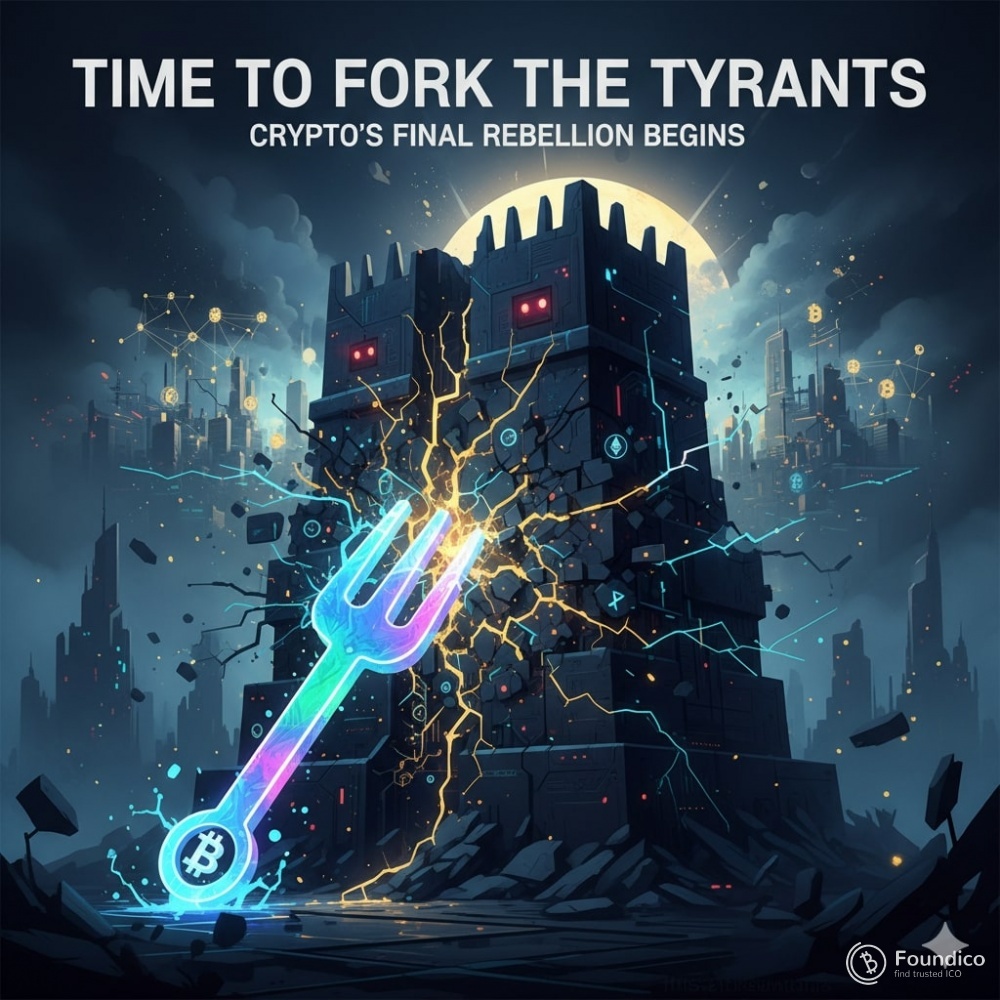Time to Fork the Tyrants: Crypto’s Final Rebellion Begins

By Dr. Pooyan Ghamari, Swiss Economist and Visionary
The year is 2025. The veneer of stability maintained by centralized power structures—governments, multinational banks, and monopolistic tech giants—is cracking. For too long, these "Tyrants" have dictated the terms of existence, controlling our currency, our data, and even the scope of our personal liberty. We have lived under the illusion of a free market, while in reality, the levers of control have been hidden in plain sight: inflationary fiat currencies, opaque financial systems, and digital platforms that monetize our every interaction.
But a silent revolution has been fermenting in the digital substrate. It is a rebellion not of barricades and bullets, but of code and consensus. It is Crypto's final, inevitable stand: a collective decision to Fork the Tyrants.
To "fork" is a term born of software development—it means taking the existing code base, copying it, and developing a completely separate, independent version. In the context of this rebellion, it is a potent metaphor. We are no longer debating the rules of their flawed system; we are abandoning it entirely and building a superior one.
The first step in this revolution was the creation of Bitcoin, the genesis block that declared monetary independence. The next was the flowering of decentralized finance (DeFi), which proved that we could execute complex financial contracts—lending, borrowing, trading—without intermediaries. These movements were necessary experiments, demonstrating the power of trustless, open-source infrastructure.
Now, we are entering the final stage: a mass migration to comprehensive, decentralized societies. This involves three critical forks:
1. The Financial Fork: The Fiat Exit
The insidious tax of inflation, driven by unchecked central bank policy, has been a primary tool of tyranny. The solution is not to simply hold digital assets, but to build entire economies on-chain. Stablecoins that are genuinely backed and transparently audited, decentralized exchanges (DEXs) with liquidity drawn from global pools, and decentralized autonomous organizations (DAOs) governing capital allocation are forming the backbone of parallel financial systems. Every time a business chooses to manage its treasury in a stable, decentralized asset, or an individual chooses a DeFi vault over a savings account, they are forking the legacy banking system.
2. The Data Fork: Sovereignty over Silicon Valley
The tech monopolies have built data empires, profiting from the detailed map of our digital lives. The Data Fork involves migrating our identities, communications, and content to decentralized web (Web3) platforms. Imagine social networks where users own their content keys and vote on platform changes, or decentralized storage networks that make censorship nearly impossible. This is the reclamation of our digital selves, turning the surveillance capitalism model obsolete.
3. The Governance Fork: Re-engineering Trust
Perhaps the most radical fork is the attempt to re-engineer human coordination itself. DAOs are not just for managing crypto treasuries; they are experiments in decentralized governance. While imperfect and evolving, they represent a rejection of the rigid, slow, and often corruptible structures of traditional state governance. The vision is for local communities and global collectives to govern themselves using transparent, verifiable, and programmable rules enforced by smart contracts, rather than relying on the arbitrary will of distant, centralized authorities.
This final rebellion will not be instantaneous, but it is inexorable. Every developer who writes code for a permissionless protocol, every educator who teaches the principles of cryptography, and every user who transacts on a decentralized chain is contributing to the momentum.
The Tyrants cannot stop an idea whose time has come. They can censor, they can regulate, but they cannot erase the open-source code now freely available to the world. The power of a fork lies in this: even if the original chain is suppressed, the community can always launch a new, stronger, and more resilient version.
The time for polite petitioning is over. The era of passive digital serfdom is ending. It is time to execute the final code, to make the definitive split, and to build the truly sovereign future we deserve. The fork has begun.

 Pepenode - Pepenode is a utility meme coin token designed to power the Pepenode ecosystem, a gamified virtual mining platform for meme coins
Pepenode - Pepenode is a utility meme coin token designed to power the Pepenode ecosystem, a gamified virtual mining platform for meme coins